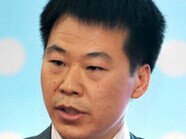WANG YUZHU: China commits to advancing regional economic integration
 As this year’s host country and an influential member of APEC, China is committed to the duty of contributing to cooperation and the exploration of new areas of growth in the Asia-Pacific region.
As this year’s host country and an influential member of APEC, China is committed to the duty of contributing to cooperation and the exploration of new areas of growth in the Asia-Pacific region.
To this end, China has proposed the 2014 APEC theme “Shaping the Future through Asia-Pacific Partnership” and identified three priority areas of cooperation.
The first is to advance regional economic integration. Since the establishment of APEC, China has been working hard on relevant institutions. It hosted the 2014 Meeting of APEC Ministers Responsible for Trade and released the Qingdao Statement, which provided guidance in establishing the FTAAP.
The second goal is to promote innovative development, economic reform and growth. For most APEC members, their main reason for participating in the Asia- Pacific partnership is to seek new opportunities for growth.
Since APEC began to turn its attention to matters of growth, new concepts such as inclusive, green, balanced and innovative growth have been introduced. In fact, these exactly reflect the challenges that APEC is facing in terms of achieving sustainability.
The third arena of cooperation is to strengthen comprehensive connectivity and infrastructure development. The proposition of connectivity indicates that all APEC members are aware of the fact that underdeveloped infrastructure can be an impediment to economic growth. In particular, China has stressed infrastructure development, which is a necessary choice given the economic status quo in the region, especially in East Asia.
In addition, China advocates the establishment of the FTAAP, through which it believes more consensus will be reached. It also insists on building a new type of Asia- Pacific partnership under the international political and economic framework of the 21st century with an open, inclusive and cooperative attitude as well as an emphasis on mutual benefit.
Apart from this, China is also a champion for the Regional Comprehensive Economic Partnership, which was first put forward by the ASEAN countries. Though it only includes part of APEC’s membership, it is believed that the Regional Comprehensive Economic Partnership, like the Trans- Pacific Partnership, paves the way for the FTAAP.
Though the high admission criteria of the TPP prevent China from participating in TPP negotiations in the short term, China agrees that the type of high-standard free trade zone exemplified by the TPP represents the future of regional cooperation.
This is why China is conducting reforms in an attempt to conform to the stringencies of the TPP. For instance, in establishing Shanghai Pilot Free Trade Zone, the nation has paid attention to important issues put forward by the TPP, such as offering foreign investors the same treatment as national enterprises.
The exploration of new growth models has become the core task of reforms in China. Though it has made remarkable achievements in more than 30 years of reform and opening up, China is now suffering from environmental pollution and excess capacity brought by a long period of overdevelopment.
Moreover, after years of serving as the so-called factory of the world, China has become overly dependent on external markets and was greatly affected when economic recession hit developed countries.
In response, the Chinese government has lowered its economic targets, launched industrial restructuring and continues to explore innovative, green and sustainable approaches to growth. The national government asserts that because of China’s economic power, it is imperative to maintain the stability and growth of its own economy in order to make a significant contribution to that of the region.
Wang Yuzhu is the director and research fellow of the Center for APEC & East Asian Cooperation, CASS
The Chinese version appeared in Chinese Social Sciences Today, No. 666, November 7, 2014
Translated by Ren Jingyun
Revised by Justin Ward
